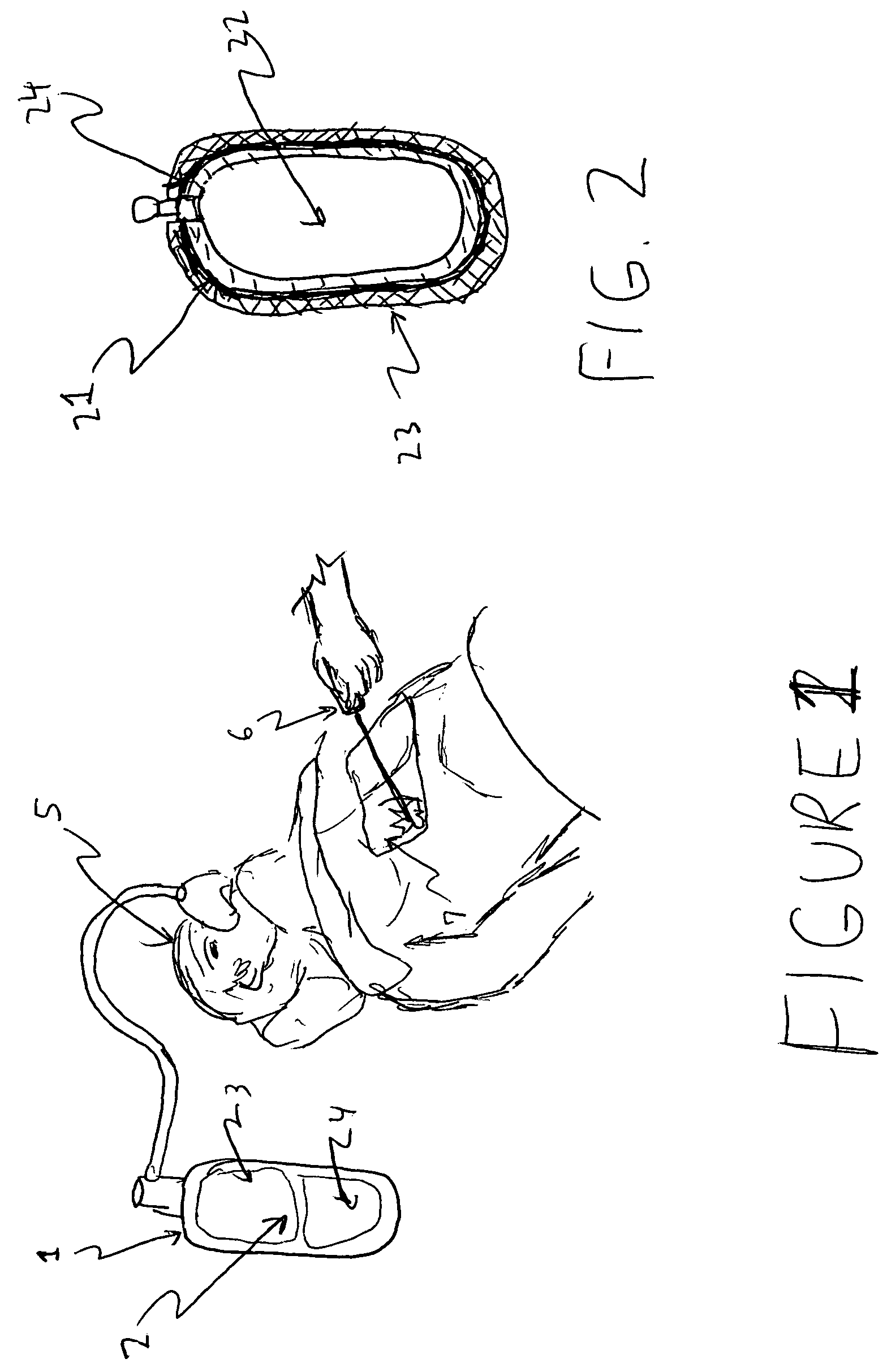Method of inerting high oxygen concentrations
- Summary
- Abstract
- Description
- Claims
- Application Information
AI Technical Summary
Benefits of technology
Problems solved by technology
Method used
Image
Examples
Embodiment Construction
[0023]Refer to FIG. 1, view of the entire inert gas composition system, as applied in a surgical procedure. The system 1 comprises a container, hose and mask, said container enclosing an inert gas composition 2 containing oxygen 3 and an inert gas additive or combination of additives 4. It is directed into a patient 5 to be assisted during a medical procedure or for long term care. During a surgery event in this embodiment, a laser tool 6 has nicked the lung 7 of the patient and has come into contact with the inert gas composition 2. Since this composition is of a nature that will not support combustion, ignition and subsequent fire does not occur.
[0024]Other ignition scenarios can also occur, even in the operating room, due to leaking oxygen that collects under operating table curtains or sheets and ignites at remote ignition source sites. Such compositions, possibly with modified component gas ratios, are also suitable for home health care applications, in which nasal canula versu...
PUM
 Login to View More
Login to View More Abstract
Description
Claims
Application Information
 Login to View More
Login to View More - R&D
- Intellectual Property
- Life Sciences
- Materials
- Tech Scout
- Unparalleled Data Quality
- Higher Quality Content
- 60% Fewer Hallucinations
Browse by: Latest US Patents, China's latest patents, Technical Efficacy Thesaurus, Application Domain, Technology Topic, Popular Technical Reports.
© 2025 PatSnap. All rights reserved.Legal|Privacy policy|Modern Slavery Act Transparency Statement|Sitemap|About US| Contact US: help@patsnap.com


